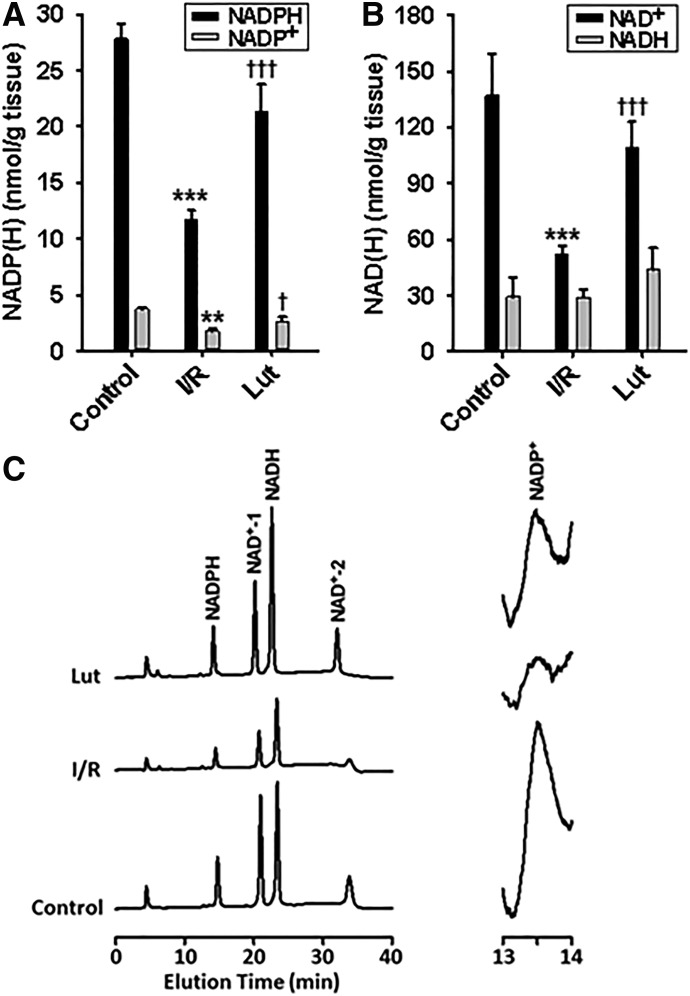Fig. 5.
NADP(H) and NAD(H) levels in hearts. Hearts were subjected to 20-minute control perfusion (control), 30-minute ischemia/30-minute reperfusion (I/R) with preischemic vehicle control (empty liposomes), and 30-minute ischemia/30-minute reperfusion with preischemic luteolinidin treatment (Lut). (A) Luteolinidin treatment preserved levels of NADPH and NADP+ compared with vehicle-treated I/R controls. (B) In the same hearts, the levels of NAD+ were also preserved with luteolinidin treatment compared with vehicle-treated I/R controls. **P < 0.01; ***P < 0.001; †P < 0.05; †††P < 0.001 (mean ± S.E.M., n = 5–7). (C) Chromatograms depicting the enhanced recovery of NAD(P)(H) with luteolinidin treatment prior to I/R. Two reaction products occur for NAD+ with potassium cyanide treatment due to addition of cyanide ion to different parts of the nicotinamide ring.

